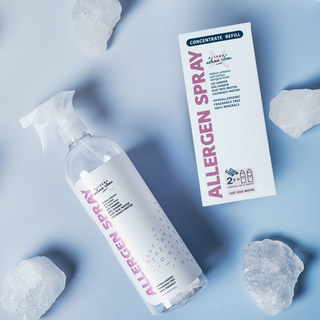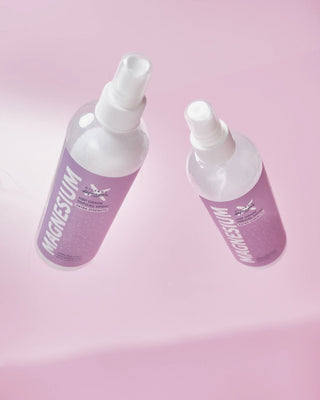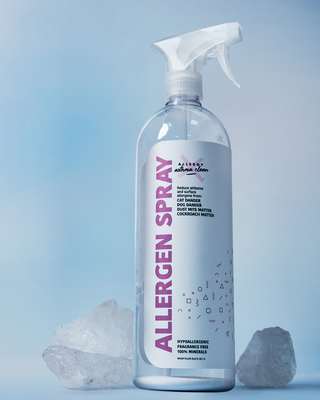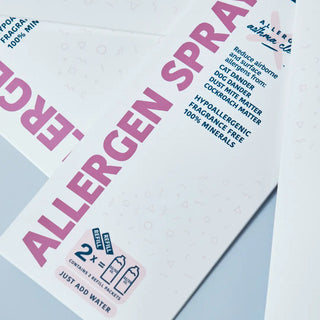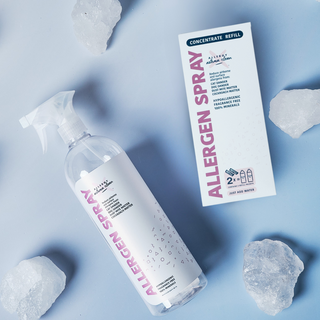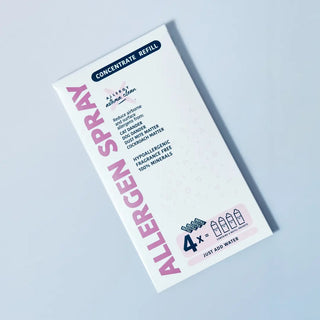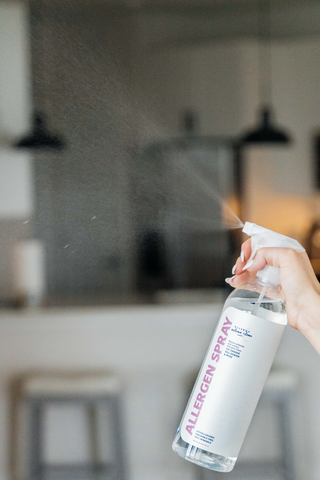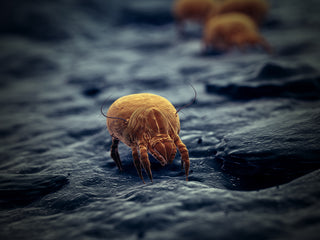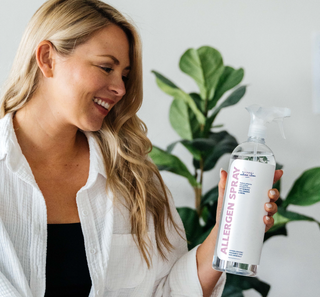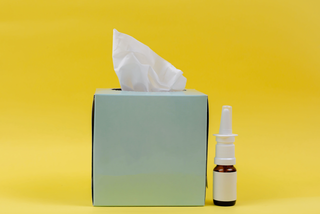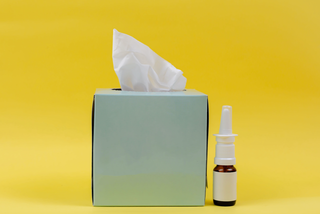TLD;R Wash bed sheets weekly to remove sweat, body oils, dead skin cells, and allergens (pollen, pet dander, dust mites accumulate 2 million dust mites in average mattress). Wash more frequently if sick, heavy sweating, oily skin, pets in bed, or active allergies. Use hot water (130°F+) to kill dust mites, fragrance-free detergent (avoid fabric softener—reduces absorbency and irritates skin), and high-heat drying for mites. Cotton and bamboo are most breathable; linen is hypoallergenic; polyester/microfiber is less breathable. Warning signs sheets need washing: musty odors, visible stains, increased sneezing/congestion, breakouts, rough texture. Between washings: spray Allergy Asthma Clean Allergen Spray by Allergy Defender on sheets/bedroom to neutralize allergens. Rotate sheet sets to extend lifespan.
Have you ever had a poor night's sleep? You wake up befuddled and need serious cups of strong coffee to function. This might be ok once in a while, but if you sleep poorly for several nights running, not only will you wake groggy, but your memory will be affected, you'll have trouble thinking, and you just might be in a downright lousy mood!
Key Takeaways:
- Dust mites affect 10% of the world population – 800 million people are allergic to microscopic eight-legged arachnids (one-fourth millimeter size); they thrive in warm, humid environments where dead skin cells accumulate (bedding, furniture, carpets)
- Allergens from feces and dead bodies – dust mite waste and decomposed bodies contain proteins triggering sneezing, runny/congested nose, itchy watery eyes, coughing, wheezing, skin irritation; exacerbate asthma symptoms and trigger attacks
- Hot water washing is essential – 140°F (60°C) kills all dust mites compared to only 6.5% killed at 104°F (40°C) warm water; wash bedding weekly, soak several minutes, use gentle fragrance-free detergents
- Allergen-proof covers create barriers – encase mattresses and pillows with protective covers; wash or vacuum covers regularly; use hypoallergenic cotton bedding (less mite accumulation than synthetic fabrics)
- Allergy Asthma Clean Allergen Spray by Allergy Defender 3x weekly – apply to mattresses, pillows, upholstered furniture, carpets targeting dust mite infestation areas; reduces allergen exposure between washings
- Washing frequency varies by circumstances – allergies/sensitivities require weekly or more frequent washing; humid climates need every few days; sweating, eating in bed, pets sleeping with you increase washing needs; weekly is sufficient for most without specific sensitivities
- Poor sleep affects memory, thinking, and mood – dust mite allergies disrupt sleep quality, causing grogginess, cognitive impairment, and irritability; dust mite control is essential for restful sleep and overall well-being
A good night's sleep is essential for our well-being
A good sleep allows us to wake refreshed and ready to tackle the day. However, many of us need help to achieve that restful sleep. One such factor that can disrupt our sleep is allergies, specifically dust mites. It's estimated 10% of the world's population, or 800 million people, are allergic to dust mites.
So, if you wake up feeling groggy, sneezy, or congested, join us as we unravel why you want clean sheets for happy sleep. Let's dive in and discover essential tips for dust mite control that will transform your sleep experience.
What are dust mites?
Dust mites belong to the arachnid family. They are not visible to the naked eye, typically measuring only about one-fourth of a millimeter in size. These microscopic creatures (tiny, eight-legged creatures that usually measure only about one-fourth of a millimeter in size) thrive in warm, humid environments in our homes, mainly where dead skin cells accumulate, such as bedding, upholstered furniture, and carpets. While teeny tiny, these creatures' impact on our health can be significant, especially for individuals with allergies or asthma.
Dust mite allergens
These allergens are primarily found in the mite's feces, as well as in their dead bodies. These allergens can cause various allergic symptoms when they reach your mucous membranes.
Symptoms of a dust mite allergy
Common symptoms of dust mite allergies include sneezing, runny or congested nose, itchy or watery eyes, coughing, wheezing, and skin irritation. Can you see why sleeping could be challenging if you're allergic to dust mites?
Did you know dust mites are virtually present in all homes, regardless of cleanliness? And they occur naturally.
For individuals with asthma, exposure to dust mite allergens can worsen their respiratory symptoms and trigger asthma attacks. If you find yourself in this category, dust mite control is essential.
Create a Dust Mite Control Routine
Weekly: Washing bedding and linens frequently is vital to dust mite control. Washing with hot water at temperatures of 140°F (60°C) effectively kills dust mites. "...researchers found that washing laundry in hot water--140 degrees Fahrenheit (60 ºC) or higher--kills all house dust mites, compared with just 6.5% of dust mites in laundry washed at 104 degrees Fahrenheit (40 ºC), or warm water."1 Additionally, soak all bedding in the washer for several minutes.
Also, use gentle detergents free from harsh chemicals because some fragrances or additives may heighten other allergies you may have.
3X's a week
Use Allergen Spray on areas prone to dust mite infestation, such as mattress seams and crevices, pillow folds, the creases and crevices of upholstered furniture, deep within carpet fibers, curtain pleats, and any fabric areas where dead skin cells and dust accumulate in dark, undisturbed spaces.
Longer Term:
Encase mattresses and pillows with allergen-proof covers to create a barrier between you and dust mites. Wash or vacuum these covers regularly to keep them as clean and dust-mite-free as possible.
Consider using hypoallergenic bedding materials, such as cotton, which is less likely to accumulate dust mites than synthetic fabrics. Avoid plush or heavy bedding that can trap moisture and provide an ideal environment for dust mites to thrive.
How often you clean your sheets is up to you
Regular washing helps remove accumulated dead skin cells, dust, and dust mite allergens from bedding. However, the frequency may vary based on individual circumstances and preferences.
Factors to consider when determining how often to wash your sheets
- Allergies and sensitivities: If you or anyone in your household has allergies or respiratory sensitivities, washing your sheets more frequently, such as once a week (or more), may be beneficial.
- Climate and humidity: In humid climates, dust mites thrive more easily. In such cases, washing your sheets more frequently, such as every few days, can help control their population.
- Personal hygiene and activities: Factors like sweating during sleep, engaging in activities that make your sheets dirtier (e.g., eating in bed), or having pets sleep with you can increase the need to wash your sheets more often.
Ultimately, find a balance that works for you. Suppose you have no specific sensitivities or factors contributing to a higher allergen accumulation level. In that case, washing your sheets weekly should be sufficient for most individuals.
Good night! And may you sleep well.
Resources:
1. https://www.sciencedaily.com/releases/2007/05/070520183542.htm#:~:text=The%20researchers%20found%20that%20washing,%C2%BAC)%2C%20or%20warm%20water.

